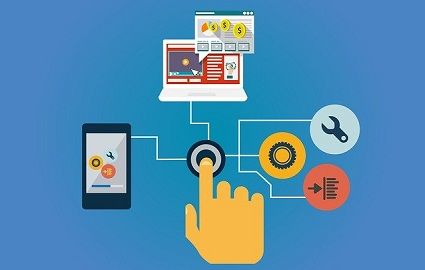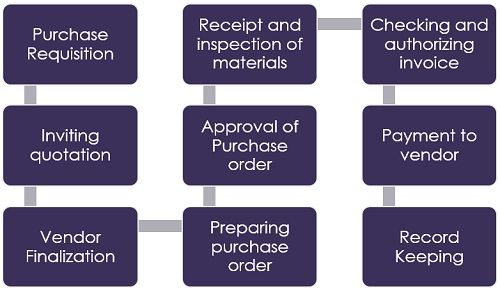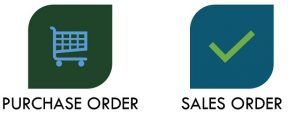 Many think that the words procurement and purchase are interchangeable and use them synonymously, but the fact is procurement is a broad term which includes a purchase. Procurement involves sourcing and purchase of goods, services and works from the external source, so as to fulfil the organization’s requirement and operate profitably and efficiently.
Many think that the words procurement and purchase are interchangeable and use them synonymously, but the fact is procurement is a broad term which includes a purchase. Procurement involves sourcing and purchase of goods, services and works from the external source, so as to fulfil the organization’s requirement and operate profitably and efficiently.
Procurement involves all kinds of acquisition including leasing, renting and contracting to arrange the goods or services. Contrarily, Purchasing merely concerns with the buying action and includes paying for the goods/services bought or received on credit.
In this section, we will be discussing the differences between procurement and purchase.
Content: Purchasing Vs Procurement
Comparison Chart
| Basis for Comparison | Purchasing | Procurement |
|---|---|---|
| Meaning | Purchasing refers to the initial stage of materials management, which involves buying the goods and services from the suppliers. | Procurement refers to the process of identifying the requirement and agreeing to the terms so as to obtain goods and services, through a competitive bidding method. |
| Nature of task | Tactical | Strategic |
| Process | Reactive | Proactive |
| Involves | Activities like ordering, expediting, payment, etc. | Activities like need recognition, sourcing, contract closure, record keeping, etc. |
| Dealing with the suppliers | Transactional focus | Relational focus |
| Concerned with | Buying goods and services | Acquiring goods and services |
| Involves | Direct process of purchasing the goods. | Steps that take place before, during and after the purchase. |
| Adopted in | Wholesale environment | Production environment |
| Emphasizes on | Price | Value |
Definition of Purchasing
Purchasing can be defined as a routine activity undertaken by the firm, which involves buying of goods and services for a price. When a firm purchases goods, the change in ownership and location occurs, i.e. the goods are transferred to the buyer by the seller on the payment of the agreed amount.
Purchasing can be for personal consumption or for commercial usage. Most business entities purchase goods to ensure an uninterrupted supply of materials so that the production process can run efficiently. Every organization has certain standards for purchasing goods like quality, quantity, price, availability and so forth.
It aims at providing the needed items, components or materials in the required quantity and quality, in a timely manner and at a reasonable cost. In addition to this, it also intends to minimize the company’s working capital locked up in the inventory and strengthening its position in the market.
Purchasing Process
Purchasing Activities
- Obtaining purchase requisition
- Inviting proposals and evaluating bids
- Dispatching purchase orders
- Advance shipment notice
- Receiving and inspecting goods
- Recording invoice
- Conducting three-way matching
- Payment to supplier
Definition of Procurement
Procurement refers to the process of streamlining the sourcing of raw materials and services so as to enable the organization to operate efficiently. It aims at acquiring raw materials and supplies mainly for business purposes on a large scale, at the best possible price, considering various factors like quality, quantity, location and time of delivery.
The process involves a number of activities that aims at obtaining the required items such as raw materials, office equipment, supplies, tools, technical equipment, spare parts, services and works from an external source, etc. Procurement aims at saving cost and building a win-win relationship with the supplier.
Procurement is all about processing information, i.e. it conveys information to suppliers about what consumers want and also to the customers about what the suppliers have. It acts as the important link amidst the buyers and sellers, ensuring that the right materials are acquired from the right vendors, in the right quantity and location and at the right time.
Procurement Process
Procurement Activities
- Identifying the needs
- Authorizing the purchase request and approving it.
- Inviting quotations from suppliers.
- Receiving quotations and negotiating terms
- Identifying and Selecting the supplier
- Negotiating
- Agreeing terms
- Preparing purchase order
- Receipt of goods and its inspection
- Conduct three-way matching
- Shipping management
- Receiving invoice
- Making payment
Key Differences Between Purchasing and Procurement
The difference between purchasing and procurement are discussed in the upcoming points:
- Purchasing implies that function of the organization which involves buying of goods and services to fulfil the company’s requirement of carrying out the production process. On the contrary, procurement is nothing but the sourcing or arrangement of goods and services which includes soliciting bids, negotiating the terms, checking the quality of purchased items and making payment, etc. to fulfil the needs of the company.
- Purchasing is a tactical process, whereas procurement is a strategic one.
- Purchasing is a reactive process, in the sense first of all the requirement of goods is recognized and then the suppliers are invited to bid. As against in the procurement process, first of all, the market is surveyed to spot the potential suppliers and a list os the shortlisted suppliers is prepared, and then the internal needs are identified after which the quotation is requested.
- Purchasing is a direct process involving buying the commodity for price. As against procurement involves all the steps that lead to the obtaining of commodity, whether it is taken before, during or after the purchase.
- While purchasing stresses on making the transactions efficient, and do not lay much emphasis on developing a relationship with suppliers/vendors, procurement is a bit opposite. Procurement focuses on developing a long and strong relationship with the suppliers. So, we can say that purchasing has a transactional focus, but procurement has a relational focus.
- Purchasing is concerned with buying the goods or other stuff for a price. In contrast, procurement is associated with acquiring the goods or services, machines, supplies, equipment whether on rent, lease or contract basis.
- In a purchase, more weightage is given to item’s price than its value, however, in case of procurement, the value of the item is given more importance in comparison to its price.
- Purchasing activity is commonly adopted in a wholesale environment, i.e. where the goods are to be purchased in wholesale for the purpose of resale. In contrast, procurement is adopted in a production environment wherein the raw materials are to be bought for undertaking the production process.
- Purchasing involves activities like placing orders, expediting and making payment. On the contrary, procurement involves both sourcing and purchasing activities, like identification of need, sourcing, payment, contract closure and record-keeping.
Conclusion
In large business entities, the requirement of raw materials, components and other supplies are recurring in nature. In this way, the concepts of procurement and purchase have been evolved.
Procurement involves everything from expediting to supplier quality, from transportation to making payment. But, this is not the case with purchasing as it includes buying of goods from external sources for money.








Gilbert Aguilar says
Very well structured as well as informative and succinct.